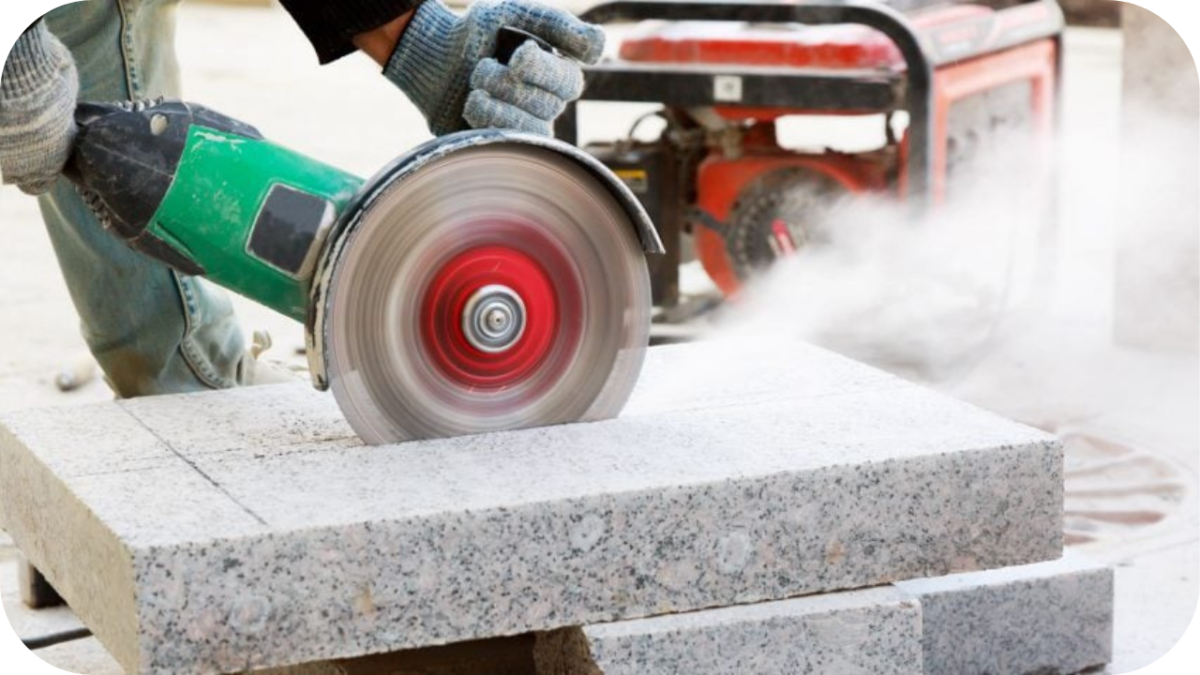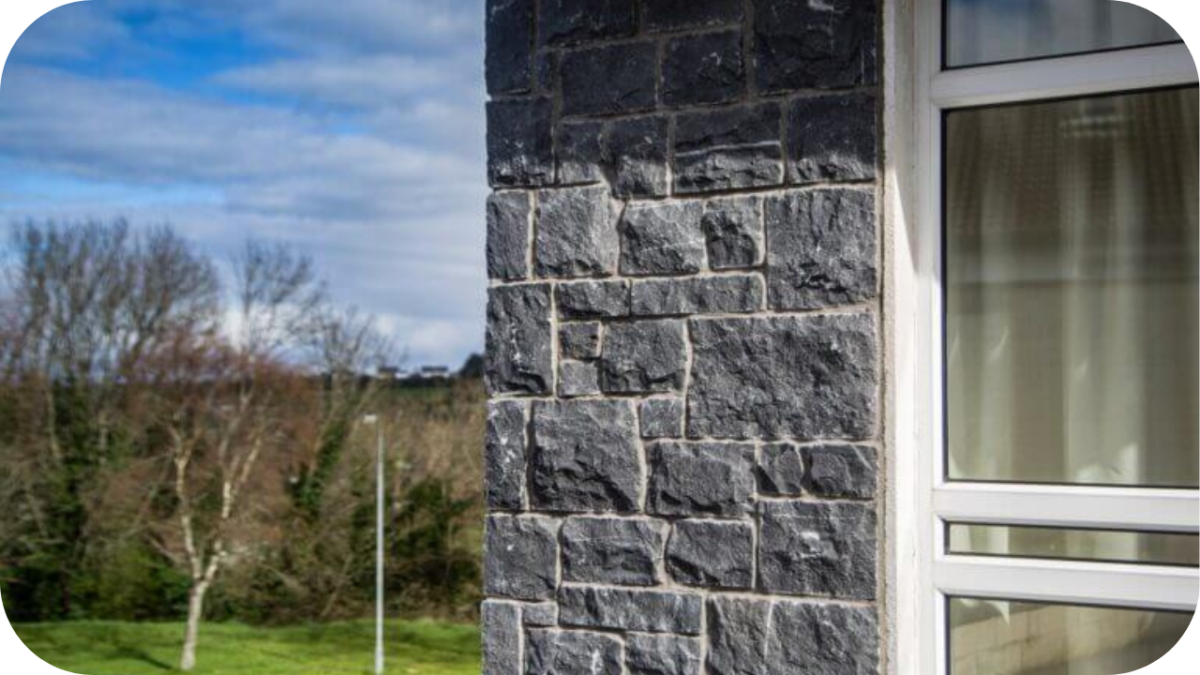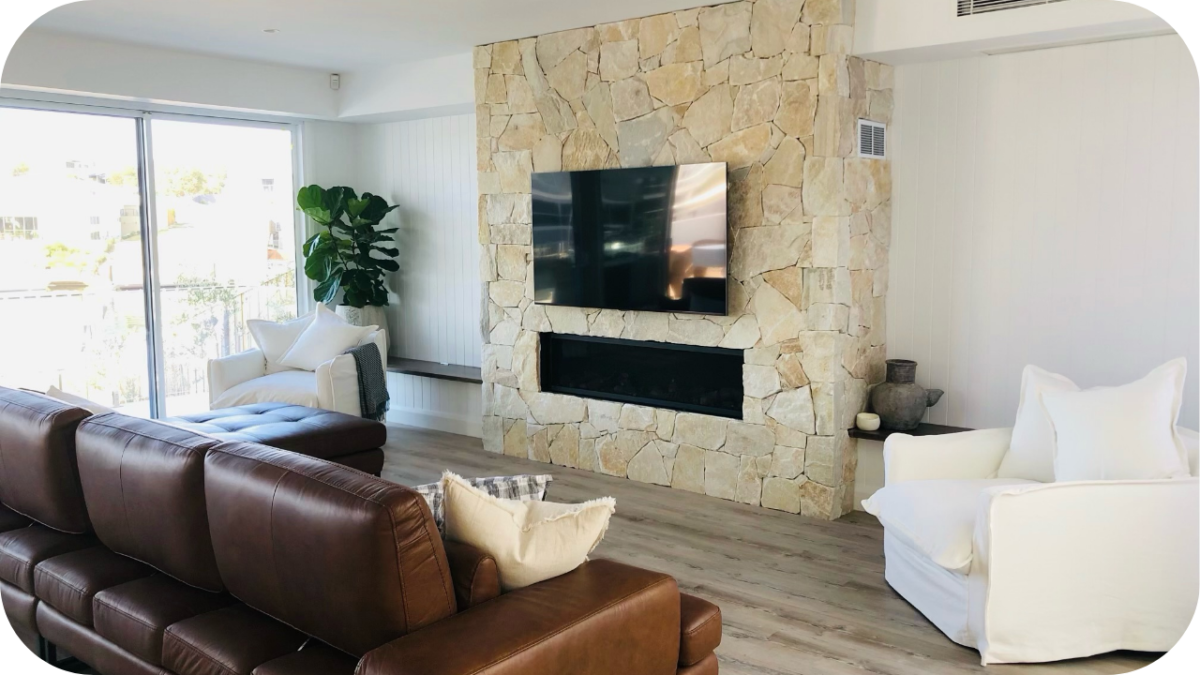Safety Considerations When Cutting or Drilling Beachport Quartz
Working with Beachport Quartz isn’t just about precision cuts. It also involves serious health and safety concerns that cannot be ignored.
This quartz-rich stone contains crystalline silica, a substance that releases harmful dust particles when cut or drilled. Without proper control, these particles can lead to respiratory illnesses such as silicosis.
From choosing the right tools to wearing the correct protective gear, this guide outlines everything fabricators, contractors, and renovators need to know to handle Beachport Quartz safely and confidently on-site.
Composition and Silica Risks of Beachport Quartz
Beachport Quartz is a dense, quartzite-based stone known for its strength and durability. This durability comes from its high content of natural quartz crystals, but it also means the material contains crystalline silica.
When the stone is cut, drilled, or ground, it releases fine respirable silica dust that can remain suspended in the air and be inhaled without notice. These particles pose serious long-term health risks, including silicosis, lung cancer, and chronic respiratory diseases.
Understanding the stone’s composition is not just helpful, it is vital. It directly impacts tool choice, cutting methods, and the level of protection required.
Silica safety is a legal and moral responsibility. Without appropriate precautions such as wet cutting or dust extraction, the risks become unacceptable.
Required Personal Protective Equipment (PPE)
Working with quartzite safely begins with proper gear. The equipment listed here protects against fine particles, sharp edges, and noise exposure during cutting, drilling, or handling Beachport Quartz.
- Respiratory Protection: P2 or N95 masks, or approved respirators, filter harmful silica dust particles to prevent inhalation. Proper fitting and replacement schedules are essential for continued protection throughout the workday.
- Eye Protection: Safety goggles or full-face shields guard against flying debris, stone chips, and dust. Clear vision and full coverage reduce the risk of eye irritation and long-term damage.
- Hearing Protection: Continuous cutting produces high-decibel noise. Earplugs or earmuffs are necessary to prevent hearing loss and reduce discomfort during long periods of machine operation or tool use.
- Cut-Resistant Gloves: Durable gloves protect hands from sharp edges, tool slips, and abrasive stone surfaces. Grip and dexterity are maintained while reducing the risk of injury during fabrication tasks.
- Protective Clothing: Long-sleeved, breathable garments minimise skin contact with dust and debris. Sturdy workwear should be paired with steel-capped boots for complete body protection during cutting and handling.
Safe Cutting Practices for Beachport Quartz
Cutting Beachport Quartz demands more than just sharp tools. These proven practices prioritise safety, dust control, and accuracy to protect both workers and the integrity of each slab.
1. Use Wet-Cutting Tools for Dust Suppression
Wet-cutting methods reduce airborne dust by combining water with particles at the source. This significantly lowers silica exposure, improves blade performance, and supports a safer, cleaner working environment for stone professionals.
2. Choose the Right Tools for Quartzite
Beachport Quartz requires diamond-tipped tools made for hard, dense stone. Using the right blades prevents overheating, promotes smoother cuts, and limits damage to the material, protecting both the stone and operator.
3. Stabilise the Slab Before Cutting
Before beginning any cut, the slab must be properly secured. Unstable stone can shift unexpectedly, increasing the risk of kickback, injury, and imprecise cutting lines that compromise both safety and finish.
4. Limit Dry Cutting to Controlled Environments
Dry cutting generates fine dust that can remain airborne for hours. When unavoidable, it should only be done with approved dust extraction systems in well-ventilated, contained areas that meet Australian safety standards.
5. Maintain Tools to Prevent Accidents
Regularly inspecting and servicing cutting equipment ensures consistent performance and safety. Worn-out blades, loose guards, or faulty connections can lead to tool malfunction, which increases the chance of on-site injury or stone damage.
Workspace Safety and Ventilation Standards
Cutting or drilling Beachport Quartz should never happen in enclosed areas. Here are essential practices to minimise airborne risks and keep your crew safe during fabrication and installation.
1. Work in Open or Well-Ventilated Areas
Outdoor setups or cross-ventilated workshops disperse harmful dust particles quickly. Ensuring air movement reduces long-term exposure, especially during extended cutting or drilling sessions involving dense quartz-based stones.
2. Use Water Suppression or Dust Extraction
Wet-cutting methods or vacuum-equipped tools capture dust at the source. These systems significantly reduce silica dust release into the workspace and are key to maintaining a safe working environment.
3. Keep Bystanders Clear of the Area
Only trained and protected personnel should be present during fabrication. Marking or isolating the cutting zone ensures unprotected individuals are not exposed to airborne particles or tool-related hazards.
4. Maintain Clean Work Surfaces
Regularly sweeping and vacuuming reduces dust accumulation on surfaces. Using HEPA-filter vacuums instead of dry sweeping avoids stirring settled dust back into the air, keeping air quality safer.
5. Ensure Proper Lighting and Visibility
Adequate lighting improves visibility, reduces mistakes, and lowers the risk of injury. Clear sightlines help workers follow safety markings and stay alert to any developing hazards in real time.
Handling and Transport of Cut Slabs
Proper handling and transport of Beachport Quartz slabs is critical to ensure safety and prevent damage. These natural stone pieces can be heavy, brittle at the edges, and awkward to manoeuvre without the right approach.
Always use team lifting or mechanical aids like slab lifters or A-frames when moving pieces, particularly after cutting. Sharp corners and edges should be smoothed immediately to reduce the risk of injury during handling.
During transport, slabs must be securely padded and braced to prevent shifting, chipping, or cracking. Never transport slabs flat. Instead, position them upright on padded edges.
Whether on-site or in transit, clear communication and proper handling techniques protect both workers and the integrity of the stone from fabrication to final placement.
Complying with Australian Work Safety Regulations
Adhering to Australian work safety regulations is essential when cutting or drilling Beachport Quartz. WorkSafe outlines specific guidelines for controlling silica exposure, which all contractors and fabricators must follow.
Preparing a Safe Work Method Statement is not optional. It should clearly define the steps, tools, and controls in place for each task.
Contractors are responsible for ensuring every team member wears the correct protective gear, uses dust suppression systems, and operates within regulated environments. Regular risk assessments and training sessions help keep safety at the forefront of mind.
Non-compliance can lead to serious legal and health consequences. Following the law protects your team, builds trust with clients, and upholds the professional standards expected within Australia’s stone and construction industries.
When to Hire a Professional Stone Fabricator
Some Beachport Quartz jobs require more than DIY skill. Here are clear signs it’s time to bring in a qualified stone fabricator for safe, accurate results.
- Tight-tolerance installations: Projects that require precise cuts for joinery, corners, or sink cut-outs benefit from professional-grade tools and expert measurements. Even slight errors can compromise fit or finish.
- Handling large-format slabs: Oversized quartz pieces are heavy and fragile. Fabricators have the lifting gear and experience to move, cut, and install slabs safely without damage or injury.
- Indoor fabrication scenarios: If cutting indoors, professionals ensure correct dust control using water suppression or certified extraction systems to prevent silica exposure and maintain clean, compliant workspaces.
- Polished edge detailing: Creating smooth, uniform edges requires specialised machinery. Fabricators deliver high-quality finishes that improve safety and elevate the stone’s overall appearance in visible areas.
- Complex design integrations: Projects that involve mixing materials, backlighting, or embedding Beachport Quartz into cabinetry are best handled by professionals who understand material behaviour and installation tolerances.
Final Thoughts
Cutting or drilling Beachport Quartz demands more than just the right tools; it requires strict safety practices. From managing silica dust to using proper PPE and working in well-ventilated areas, every step matters.
When in doubt, consult a professional. For expert guidance, safe handling tips, or to source premium Beachport Quartz, reach out to the team at Splendour in Stone today.





